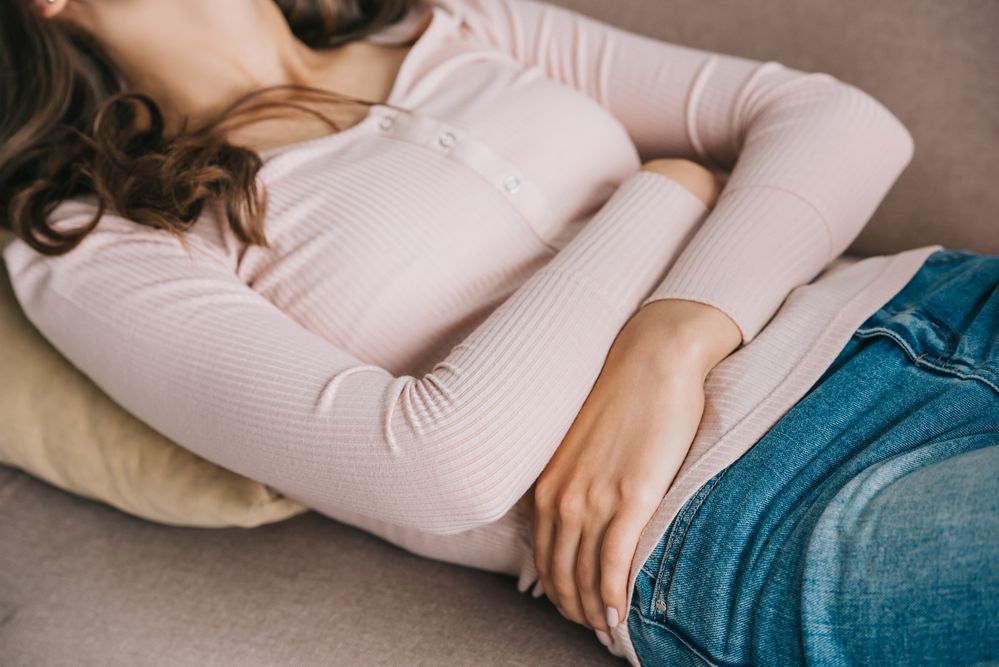
This article is an opinion editorial from a patient who had endometriosis for twenty-five years. We first met this individual on Twitter, as she shared some of her experiences with endometriosis and her struggle with chronic pain. The writer has chosen to remain anonymous because of the personal nature of her health condition.
All it took was an accident to change my life. I was sixteen at the time and on summer vacation with my parents. My mom wanted to go horseback riding with me and my cousin Nancy. We headed to a local ranch that offered hourly rates. All three of us were experienced and trained riders.
The details of that day are still kind of foggy for me. I remember choosing the largest horse, which seemed a little more spirited than the others. I had been on several trail riding excursions, and I didn’t want to feel bad if my horse felt tired. I hoped we’d get into an open field at some point and get in something a little faster than a walk or a trot.
We didn’t know that the rancher had opted not to feed the horses that morning. We arrived early to get in a morning ride before it got too hot. It was July, and the ranch had suggested we arrive by 8:00 a.m. We experienced a lot of problems controlling the horses in the main paddock. Before we set out, the rancher had us sign an injury waiver. Which to be honest, we didn’t think twice about it.
Halfway through the trail, we felt the heat, and the horses continued to be challenging to manage. Of course, I was seated on a horse that was about 16 hands high. Later I would find out that the horse weighed more than 1,200 pounds. On the way back to the barn, the horses (hungry and undoubtedly thirsty) bolted for the paddock back at the ranch.
When a horse decides to ‘barnstorm,’ there isn’t much you can do about it. I tried to stop my horse from running and planned to dismount and then walk my horseback. Nancy’s horse suddenly bucked and kicked my horse in the chest. And then I felt it. The shudder before a horse rears straight up on its hind legs. With one purpose, to get the rider off its back.
As an experienced rider, I knew what was coming. I prepared myself by ‘choking up’ on the reins and grasping some of the horse’s mane. I was going to stand up in my stirrups (as I had done a dozen times before in similar situations) and rise with the horse and hoping that the not-so-gentle giant would try once and then simmer down.
The first time the horse reared up, I rose with the horse like a pro! Stood up in my stirrups but as the horse descended back to the ground, one of my feet came out of a stirrup on the left side. And I felt the horse shudder again, preparing for another rear. I was terrified. I could not get my foot in the stirrup fast enough, and so I grabbed a larger handful of manes higher up on the horses’ neck.
It was enough to send the horse off balance. He fell straight backward with me still in the saddle. I landed with my back on the rocky soil, crushed by the western saddle. The horse rolled to the right and got up. My right leg came free of the second stirrup, and the horse thundered back to the ranch without me.
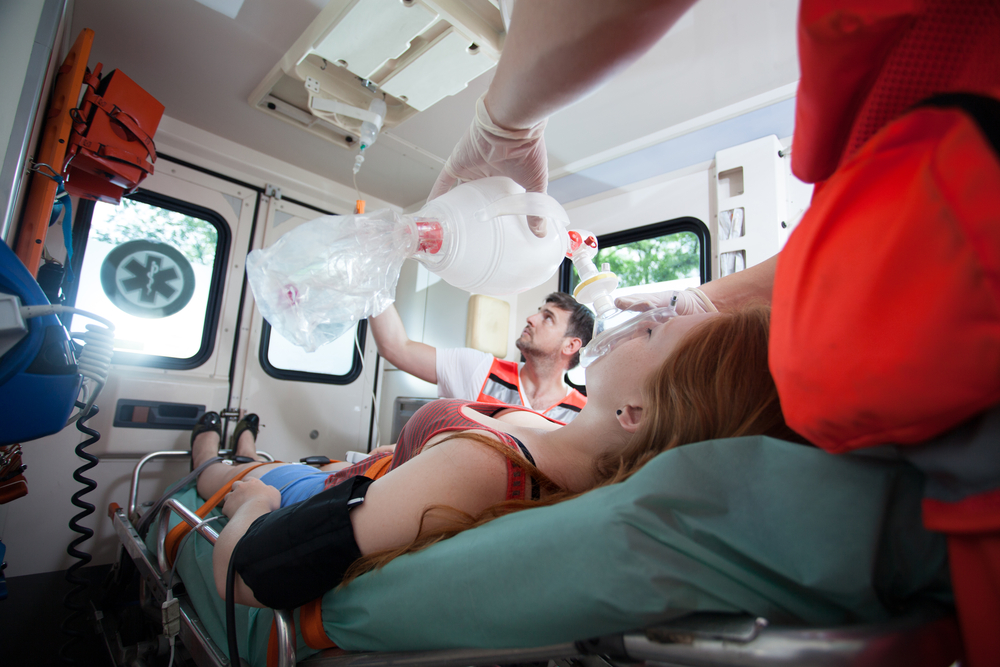
I remember I couldn’t breathe. My mom flew off her horse to the ground and started whacking me on the back. I had the wind knocked out of me, and apparently, my lips were white, and my face had gone a blue-gray color. And I smelled blood. When I looked down at my new English riding britches I had just got for my birthday; they were saturated in blood. My boots were also filling up quickly with blood, and my feet felt slushy as we made the long walk home to the ranch—the rancher refusing to come to pick us up in his truck for fear of legal liability. I don’t know how long it took, but I know it was at least 2 miles that we limped, with my Mom holding me up. And excruciating pain.
After an emergency ride to the hospital and evaluation, nothing was broken. Somehow, I had managed that accident without breaking a single bone. But the soft tissues in my pelvis area were crushed and severely damaged. It took two days in the hospital to get the internal bleeding to stop.
I remember the doctor saying something obscure to my Dad while he was in the hall outside of my hospital bedroom. The doctor said, “Her uterus was severely damaged. She may have reproductive damage.” Something my Dad didn’t mention again. And I was glad about that. Having kids was the furthest thing from my mind as a sixteen-year-old.
The rancher refused to accept any responsibility. And when contacted by my parents’ lawyer, he provided copies of the liability waivers we had signed. I wish we had pushed the case in light of his negligence, giving us horses that had not been fed that morning. He placed us in a dangerous scenario that exploded into a serious accident and injury. And he was unremorseful about the incident.
His negligence would change the course of my life. That summer, I had no clue that I would never really get better after that accident. And that things were going to get a lot worse.
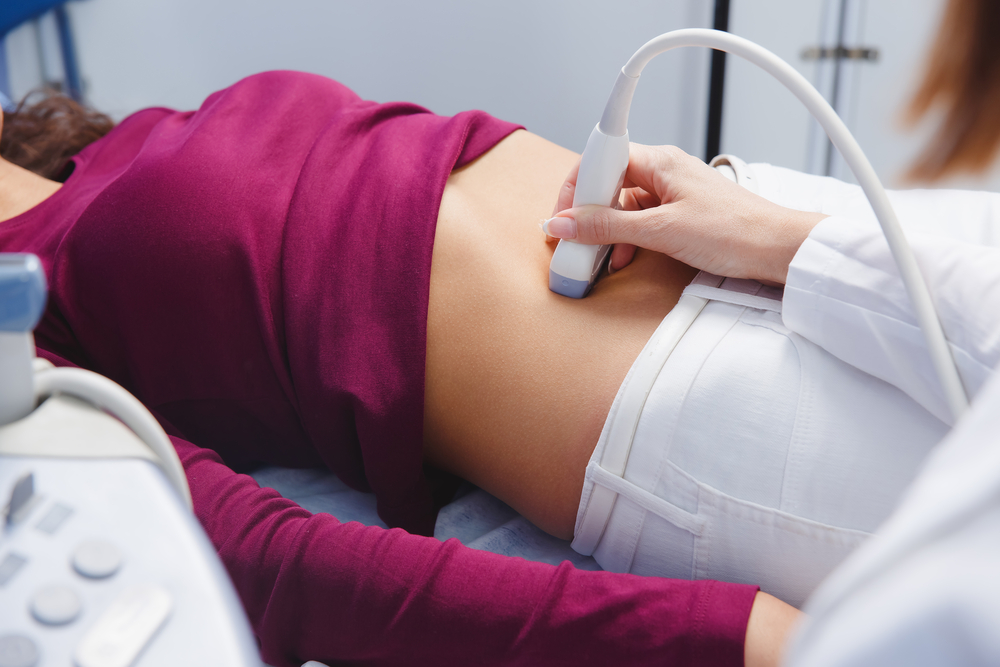
As my mom would say, I was a late bloomer—someone who didn’t pass the rite of womanhood until later that year was 16. Instead of experiencing what so many of my friends had; light symptoms, I experienced excruciating pain. And my symptoms monthly were anything but ordinary. The pain was so bad my legs would almost go numb. And I just wanted to curl up in a ball and make it stop.
Every month, or sometimes every three months, I went through the same painful process because of irregularities due to the injury. And I learned quickly that not many people have empathy for a woman who has severe menstrual cramps.
When I shared that I was in significant pain, I was told:
None of those things were true. But as the years progressed, I learned to live with my symptoms. Sometimes my menstruation would have very heavy symptoms, and I lost a lot of blood. On more than one occasion, doctors commented that I was anemic. And that I needed to add more natural iron to my diet.
Not one of the physicians put together that I had a chronic disease and condition called endometriosis. The term never even came up. In the days before the internet, and with a male doctor who definitely could not personally empathize, I went through ten years of struggling with the pain.
And the symptoms of swelling, headaches, and other soreness persisted. Sometimes without occurring for a month or two. And then other times persisting as long as five months, with no break in between.
One of the difficulties with endometriosis is that you never know when symptoms are going to begin. Most women have cycles that run like clockwork. My ‘on and off’ switches were busted. Sometimes it was off and stayed off (and I enjoyed a month or two of feeling normal). The next thing I knew, the ‘on’ switch was triggered. My backpack in College looked more like a diaper bag. I had to be ready for anything, including a full change of clothes.
How do you get out of bed in the morning when you barely slept because of the pain? Or worried that the bleeding would be so profuse that you were going to ruin your bedding or clothes. Again. How do you explain to your friends that you can’t go swimming? Or bounce around on a boat at the lake for a few hours because of mind-numbing pain.
It changed my life. It created a sense of exclusion from other ordinary people, and not in pain. I felt like I was on the outside looking in on what everyday life should be. I didn’t know anyone else in my family or in my circle of friends who had chronic pain. And I tried my best to hide it.
I explored every possible remedy, prescription medication, and a naturopathic option for pain management. I could have bought stock in St. Johns Wort. It didn’t work. I tried topical creams to numb the area, but because the pain was internal, it didn’t do much, if anything at all. I took over the counter (OTC) muscle relaxers. They worked sometimes, but they only marginally reduced the pain. And sometimes they didn’t work at all.
And then the prescription-strength medications came. And they were effective at first. But over time, the different pain medications become less and less effective. My doctor kept switching different types, looking for the ultimate cure-all to my pain symptoms. I am sure I can name virtually every name in the Compendium of Pharmaceutical Specialties (CPS).
When my mother experienced a life-threatening addiction to opioid medications, I stopped every prescription pain relief method. I gave up on the OTC drugs at the pharmacy as well. They weren’t doing much for my pain. I started to use holistic methods for pain management. I tried aromatherapy, did yoga daily (that helped a lot), and cut back on my caffeine. I started eating more fruits and vegetables, cut back on my sodium and my sugar intake.
To be clear, none of these methods worked. But they (sometimes) made the pain slightly more bearable. And that was better than nothing.
Every year I went back for a physical. And I would have a long conversation with my doctor about my symptoms. I would be told the same response over and over again. It equated to “deal with it” and “stop being a baby.” I changed primary care physicians three times. One was a female doctor, who suggested I might have endometriosis. I went to the library (we had those back then) and to the medical section. It was the closest thing I had to WebMD. That is when I had my ‘ah-hah’ moment when I read about the symptoms. What it felt like to have moderate to severe endometriosis.
And then I felt anger. By this time, I was twenty-six years old and engaged. It was my future husband that convinced me to get a referral to a gynecologist in the city. He was a male gynecologist and also a fertility doctor. You see, I had flashbacks of the day of the accident and what I overheard the doctor tell my Dad. Now planning to be married and start a family, I had this nagging fear that I wasn’t going to have a child.
By the time I got married, and after ten years of being discouraged, ignored, and debunked by every physician, I sought advice from, I had the diagnosis. Unwilling to give up, I spent twenty-five thousand dollars trying to fix what was broken. I wanted to be a mother. But after several surgeries and years of dangerous hormone therapies to stimulate fertility, we gave up.
I was broken. And I was furious after I learned that early intervention could help women with endometriosis. That it may have been possible to become pregnant if just one of those physicians had taken the time to get me resources and therapies to correct the problem. There is no cure for endometriosis, but there are ways to minimize the scarring in the uterus. The primary reason why women with endometriosis are often infertile.
After years of trying and additional health problems caused by the heavy hormonal therapies, infertility treatment, and miscarriages, my marriage broke down. We divorced shortly after that.
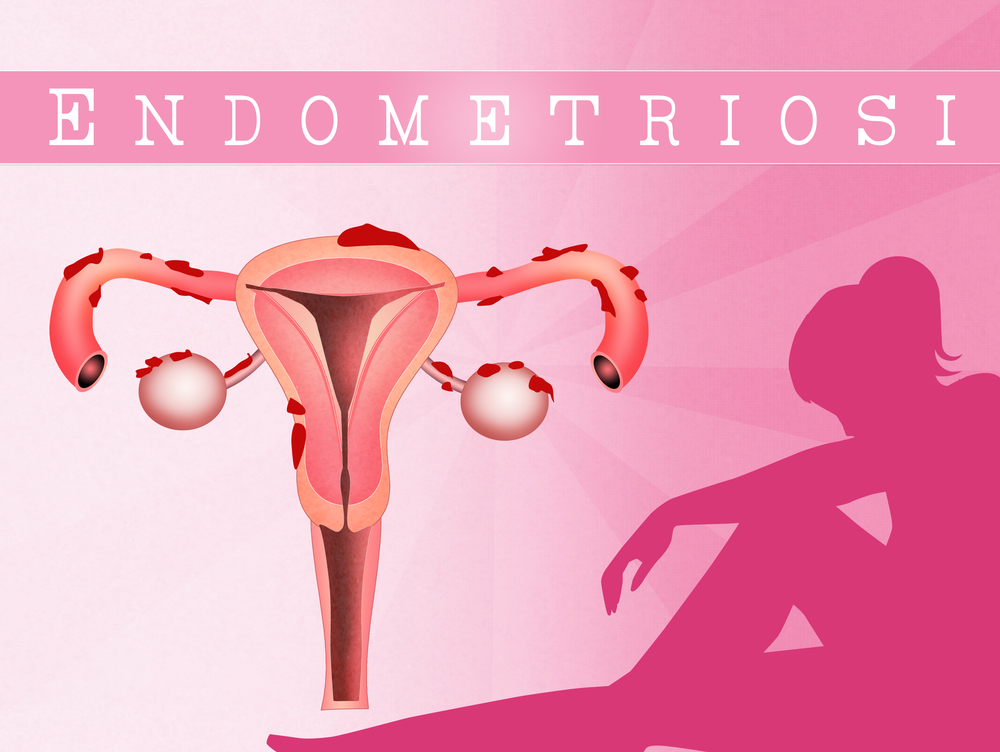
Seven years later, informed by the internet and connected to endometriosis support networks and groups, I had learned so much more about the condition. I made sure I was doing annual physicals to test for reproductive cancer.
Every year the precancerous cells were under the percentage of high risk, according to my doctor. Five percent, two percent, six percent, and then one year when I was 39, I got an urgent call. The precancerous cells were 65%. I was now at a very high risk of developing reproductive cancer.
I had watched a female second cousin fight cervical and uterine cancer. She had a couple of children by the time she succumbed to her cancer. But she was only a few years older than I was. I knew I wasn’t going to be able to have children. I made the difficult decision of having a full hysterectomy at the age of thirty-nine. And I spent three months recovering from the abdominal procedure. But at last, I was free of the symptoms.
It took me another six months to restore my depleted iron levels. I was no longer anemic, and for the first time in two decades, I had energy. I wasn’t a zombie anymore. The dark circles that had been under my eyes forever were gone. And I was not in pain.
When I began to attend patient advocacy groups, I started to agree with many of the women I met there. I felt that somehow if endometriosis was a chronic disease that men had to endure, that there would have been a cure for it already. We laughed about that often and with a degree of sadness because we all knew there was an element of truth to that assumption.
Because women who share their stories and become active and sometimes volunteer to educate other women, there has been a better narrative about endometriosis. It is my belief that women today are taken seriously when they report the symptoms. That physicians have a deeper and more compassionate understanding of endometriosis. And I hope that women today do not have to go through the frustration of trying to get a physician to believe you. That your symptoms are more than just ‘average cramps.’
I have volunteered for several health groups in the United States that promote awareness about endometriosis. I was so encouraged when I began to see commercials on television talking about the condition. Sure, it was an advertisement for yet another prescription pain medication, but the dialogue was open and out there. And I felt that we had come a long way in the past twenty years. And so, had the medical community.
Until July of 2020, there had not been any significant investment or funding available for research into endometriosis. Funding is based on patient population demographics. About 11% of women between the ages of eighteen (18) to forty-four (44) are diagnosed with endometriosis. But the number of women who are suffering from the condition without a treatment plan is estimated to be much higher.
After all, it is only menstrual cramps, right?
The U.S. House approved a doubling of funds for endometriosis research. The announcement awarded $26 million for finding a cure or better interventions for women. Iowa Representative Abby Finkenauer championed the funding. The Congresswoman is a member of the EndoFound group, who supported her in telling her personal story about suffering from endometriosis.
Patients that are diagnosed with endometriosis have a higher than average risk of developing cervical or uterine cancer. And since reproductive cancers generally do not occur until late-life for most women, the link to endometriosis is often missed. This is why predicting and early diagnosis of endometriosis is so important. It is estimated that 290 women, on average, die from cervical cancer in the United States annually.
I am aware that my story could have ended differently. In retrospect, I wish I had advocated for my rights as a patient to get the medical attention I needed. Living in a state of almost constant debilitating chronic pain for more than twenty years changed me. It impacted my career. It affected my marriage. And I felt withdrawn and shameful about my condition because no one wanted to talk about it or help.
I chose to cope with the symptoms the best I could. Frankly, no one seemed to care. The fertility treatments I received, trying to become a mother increased my risk of developing reproductive cancer. My story is not unique. As I have continued to volunteer and remain active in groups that create awareness about endometriosis, I have met hundreds of women online who have had similar experiences. They suffered in silence.
I am proud of the work that groups like EndoFound and other organizations spotlight endometriosis’s chronic disease. I hope that sharing my story may inspire others to advocate for their health needs with more persistence than I did. Because no one should have to live every day of their life in pain, your quality of life does matter. And sometimes, you have to fight to be heard to get the treatments you need.
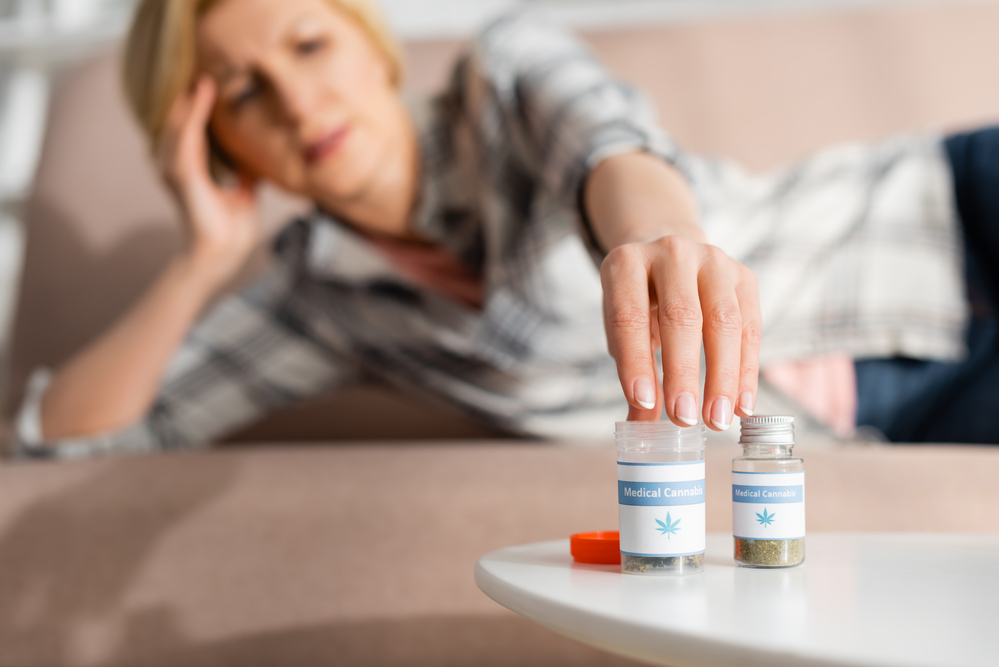
Access to alternative medicine to help women diagnosed with endometriosis is vital. We now know so much more about the risk factors of long-term use of opioid medications. Other clinical studies have revealed that over time, opioids can increase pain receptors. Which amplifies the inflammation and chronic pain symptoms?
If opioids are not a safe answer for women with chronic pain from endometriosis, cannabis is another option. The problem is that in some states that have defined chronic pain as a qualifying health condition, they may not recognize endometriosis in that category. In other states, a diagnosis of endometriosis may be enough to qualify under the chronic pain classification.
After speaking to many patients in other states with endometriosis, the consensus about medical cannabis is pretty straightforward. Cannabinoids can also provide an anti-inflammatory benefit that helps further reduce swelling and pain symptoms. For women who are anemic because of endometriosis and low energy, Sativa strains of cannabis can provide a boost of much-needed energy to get through the day.
It is my hope that more states define endometriosis as a qualifying health condition. Or amend medical marijuana legislation to include endometriosis in that category. This will give American women a more natural alternative for symptom management. And for women with moderate to severe symptoms, it could also restore their quality of life.
Featured Image: AndrewLozovyi | Deposit Photos
No Information on MarijuanaDoctors.Com should be used to diagnose, treat, prevent or cure any disease or condition. You can view our Full Disclaimer here.